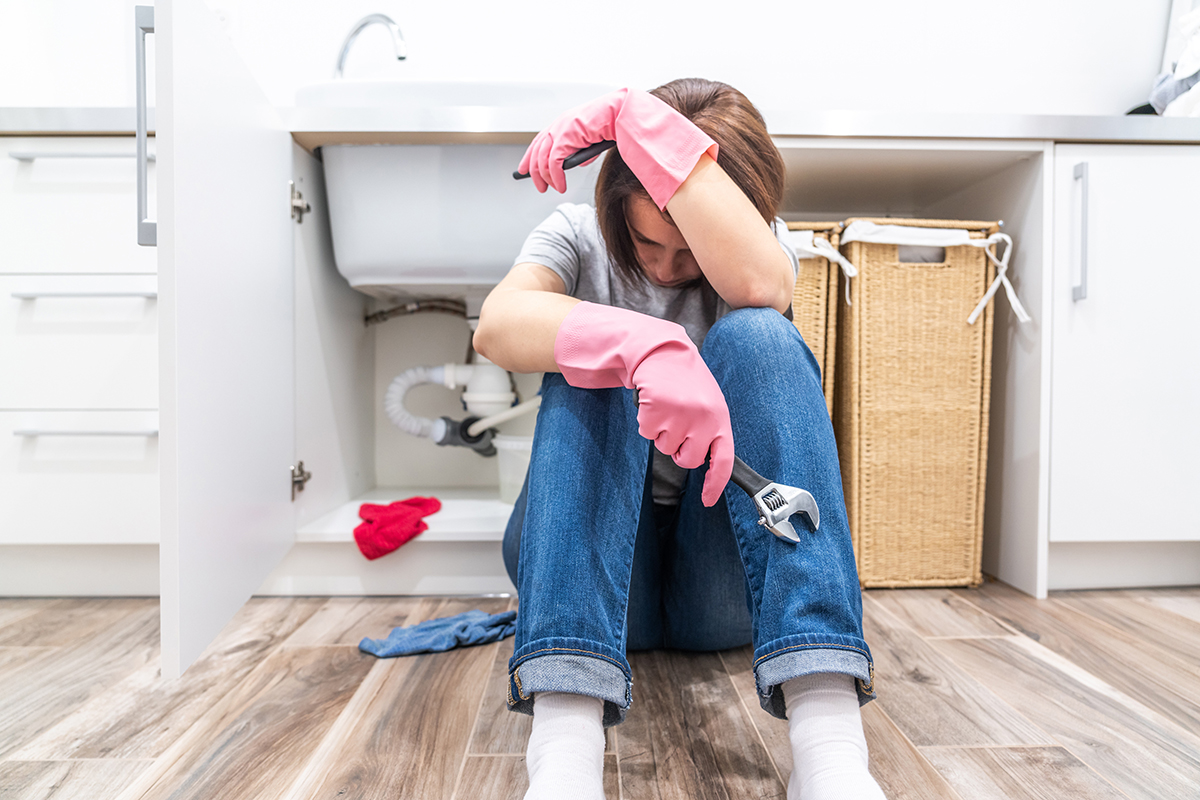Just how do you actually feel in relation to The Handy Guide To Fixing Your Garbage Disposal Leaking?

Waste disposal unit are essential kitchen devices that aid in dealing with food waste successfully. However, a leaking garbage disposal can be a frustrating and unpleasant problem to deal with. Luckily, numerous leaks can be repaired easily with a few simple actions. In this post, we will go over exactly how to take care of a leaking waste disposal unit efficiently.
Introduction
Garbage disposals are set up under kitchen area sinks and are designed to shred food waste into smaller sized items, permitting it to pass through the plumbing system easily. While these devices are generally reliable, leaks can happen with time as a result of damage, loose links, or damages to the unit.
Step-by-Step Overview to Taking Care Of a Dripping Garbage Disposal
Shut off the Power
Prior to trying any kind of fixings, make sure that the power to the garbage disposal system is turned off to stop the threat of electric shock.
Situate the Leakage
Determine the exact location of the leakage and determine the reason
Tighten Connections
Utilize a wrench to tighten any type of loosened connections in between the disposal device and the plumbing system.
Change Seals or Gaskets
If the leak results from used seals or gaskets, get rid of the old components and change them with brand-new ones.
Patching Fractures or Openings
For cracks or openings in the disposal system, use epoxy or a suitable patching product to secure the broken area.
Determining the Resource of the Leakage
Prior to attempting to take care of a leaking garbage disposal, it is essential to determine the source of the leak. This can generally be done with visual inspection or by carrying out straightforward tests.
Visual Inspection
Evaluate the waste disposal unit device meticulously for any indicators of water leak. Pay attention to areas around seals, gaskets, and connection factors.
Evaluating for Leaks
One means to test for leaks is by running water via the disposal unit and looking for any kind of noticeable indications of leakage.
Typical Root Causes Of Leakages in Rubbish Disposals
Worn Seals and Gaskets
Seals and gaskets play a vital role in protecting against water from leaking out of the waste disposal unit. In time, these parts can wear away, leading to leaks around the disposal system.
Loose Links
The connections in between the waste disposal unit and the pipes system can come to be loose gradually, triggering water to leak out throughout operation.
Cracks or Openings in the Disposal Unit
Physical damage to the garbage disposal, such as fractures or openings in the real estate, can likewise cause leaks.
Devices and Materials Needed for Repairing a Dripping Garbage Disposal
Before beginning the repair work procedure, gather the essential tools and products, consisting of a screwdriver, adjustable wrench, plumbing's putty, substitute seals or gaskets, and epoxy or patching material for repairing fractures or openings.
Testing the Waste Disposal Unit After Repair
Once the repair service is total, test the garbage disposal by running water through it to guarantee that the leak has actually been settled.
Preventive Maintenance Tips to Avoid Future Leakages
To avoid future leakages, it is necessary to do routine maintenance on your waste disposal unit. This includes keeping it clean, preventing placing non-food products or tough objects down the disposal, and occasionally looking for leaks or other issues.
Conclusion
Finally, taking care of a leaking waste disposal unit is a fairly straightforward process that can be finished with fundamental tools and materials. By following the actions laid out in this write-up and practicing precautionary upkeep, you can maintain your garbage disposal in good working problem and prevent costly repair services in the future.
What to Do About a Leaking Garbage Disposal
A leaking garbage disposal often goes unnoticed until you confront a sopping cabinet, a foul-smelling puddle, or an audible drip-drip-drip from the unit. The fix can be frustrating, too, because the leak can stem from a number of components in the system. Fortunately, with a little sleuthing, you can zero in on the leak and—depending on the exact location—stop the icky oozing and repair the component that caused it. Worst case scenario, if it turns out that the garbage disposal must be replaced, installing a new one is a reasonable do-it-yourself task for those with basic plumbing skills. Read on to keep the cash you’d otherwise hand over to a pro.
Prepare to find the leak
Prior to testing the garbage disposal for leaks, unplug it at the wall outlet and turn off the power from the breaker box to prevent electrical shock. Then insert a watertight sink stopper into your sink drain and wipe the unit dry with a clean cloth. In any handy container, mix a few drops of food coloring into a few cups of water, and pour the dyed water onto the sink stopper to help you locate the leak.
Investigate the source
the top, where the disposal meets the sink drain the side, where the dishwasher hose or main drain pipe connects to the disposal or the bottom of the unit Inspect each of these locations while gliding a light-colored rag over the unit; the dyed water will readily show on the rag and reveal the location of the leak. If a leak isn’t immediately apparent, remove the sink stopper and pour a few more cups of dyed water down the sink drain, then check for leaks again. Leaks near the top of the unit are more likely to show themselves while the sink is plugged, while side and bottom leaks are more noticeable while the sink is unplugged.
The metal sink flange that sits directly inside the sink drain is typically sealed around the top with plumber’s putty (a clay-like sealant) and then secured from under the sink with bolts. If the plumber’s putty deteriorates, or the bolts loosen, the flange can no longer form a watertight seal between the sink drain and the disposal—which could cause a leak at the top of the unit.
To reseal the leaky flange, you must first detach the garbage disposal. Start by loosening the screws securing the main drain pipe to the disposal, then loosen the screws in the metal clamp securing the dishwasher hose to the disposal and detach the drain pipe and dishwasher hose from the disposal. Loosen the screws in the mounting ring that connects the disposal to the metal mounting assembly beneath the sink, then pull down the disposal and carefully set it on a clean, dry surface. Loosen the bolts in the mounting assembly with a wrench, then pull down the mounting assembly and set it near the disposal.

We hope you liked our topic on The Handy Guide To Fixing Your Garbage Disposal Leaking. Thanks a ton for taking time to read through our posting. Sharing is nice. You just don't know, you may be helping someone out. We recognize the value of reading our article about Why Is My Garbage Disposal Leaking From the Bottom?.
This Page